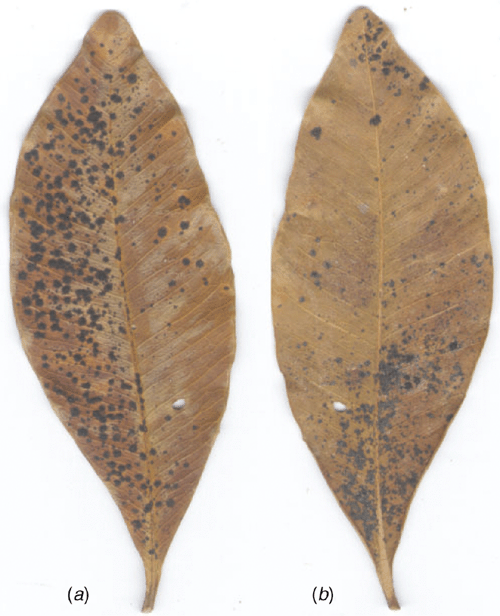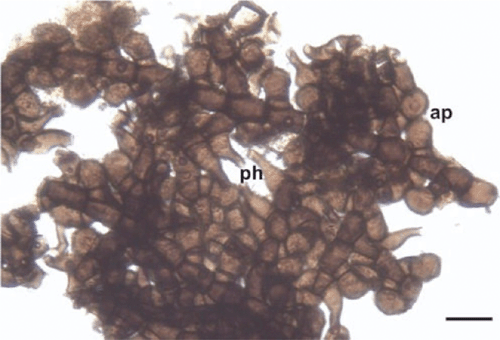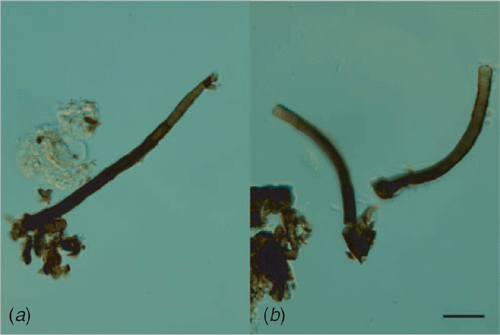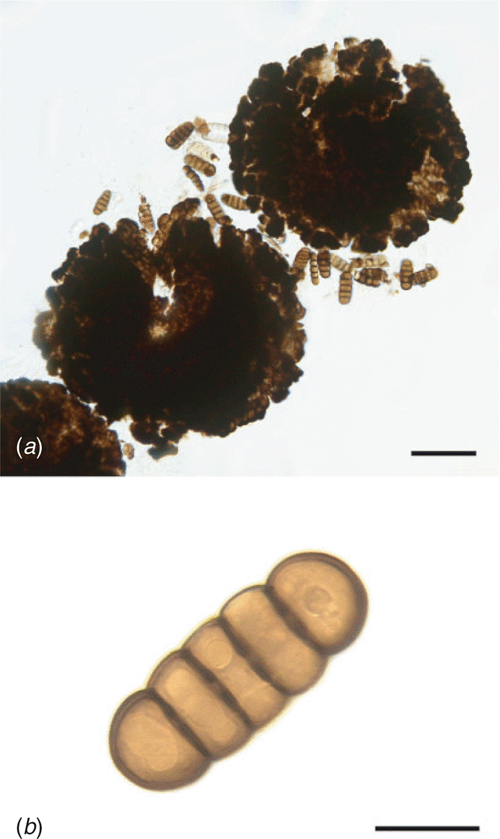Black mildew disease on the neotropical forest species Aspidosperma polyneuron in Brazil, caused by Meliola aspidospermatis
D. C. Dutra A , M. Silva A and O. L. Pereira A BA Departamento de Fitopatologia, Universidade Federal de Viçosa, Viçosa, MG 36570-000, Brazil.
B Corresponding author. Email: oliparini@ufv.br
Australasian Plant Disease Notes 3(1) 101-102 https://doi.org/10.1071/DN08040
Submitted: 20 June 2008 Accepted: 8 July 2008 Published: 17 July 2008
Abstract
A black mildew disease caused by Meliola aspidospermatis (Meliolales) was observed on leaves of the neotropical forest species Aspidosperma polyneuron in a commercial nursery in the state of Minas Gerais, Brazil. This is the first record of this fungus in Brazil, previously known only from Argentina.
Aspidosperma polyneuron (local name: peroba-rosa) is a neotropical forest species belonging to the Apocynaceae. Its wood is employed in general building and produces an essential oil that is considered to have some medicinal properties. Due to its commercial value, this species is considered as threatened in Brazil. In February 2008, seedlings of A. polyneuron were found colonised by a black mildew (Fig. 1) in a commercial nursery in Viçosa, state of Minas Gerais, Brazil. All 200 seedlings were colonised by the fungus. Samples of infected leaves were collected, photographed, dried in a plant press and deposited at the Herbarium VIC (Universidade Federal de Viçosa, Viçosa, MG, Brazil). The fungal samples were examined with a light microscope (Motic BA 300) fitted with a digital camera.

|
A description of the fungus on host tissue follows. Colonies on living leaves, amphigenous, mostly epiphyllous, black, confluent, sometimes covering the entire leaf surfaces. Internal mycelium intercellular, colonising epidermal cells, forming haustoria. External mycelium amphigenous, net-forming, branching opposite at an acute to wide angle, composed of dark brown, thick walled, septate hyphae, producing both appressoria and phialides (Fig. 2). Appressoria unicellular, alternate, dark brown, cuneate, rounded, 12.5–16.0 × 10.0–12.5 μm. Phialides ampulliform, alternate, brown, mixed with appressoria, 17.5–20.0 × 7.5–8.5 μm. Mycelial setae present, straight with acute apex or curved with rounded apex (Fig. 3), septate, dark brown, 117.5–205.0 × 7.0–7.5 μm. Perithecia black, ostiolate, globose, with crenate to crenulate surfaces (Fig. 4a), 243–318 μm diam. Asci unitunicate, evanescent. Ascospores dark brown, elliptic, obtuse, 4-septate, constricted at septa (Fig. 4b), 43.0–50.0 × 13.0–20.0 μm. Material examined: VIC 30612, on leaves of Aspidosperma polyneuron, Viçosa, State of Minas Gerais, Brazil, O.L. Pereira, 15 Feb. 2008.

|

|

|
The fungus matched the description of Meliola aspidospermatis Speg., a pathogenic fungus originally reported on A. polyneuron in Argentina by Spegazzini (1924). Later, Stevens (1927) transferred the species to Irenina and subsequently Hansford (1961) transferred the species to the genus Asteridiella. However, due to the presence of setae on the external mycelium, this fungus clearly belongs to the Meliolaceae genus Meliola.
Acknowledgements
Deiziane da C. Dutra and Meiriele da Silva wishes to thanks FUNARBE and FAPEMIG respectively to financial support.
Hansford CG
(1961) The Meliolineae – A monograph. Beihefte Sydowia 2, 1–806.

Spegazzini CL
(1924) Revisión de las Meliolas Argentinas. Anales del Museo Nacional de Historia Natural de Buenos Aires 32, 339–393.

Stevens FL
(1927) The Meliolineae I. Annales Mycologici 25, 405–469.



